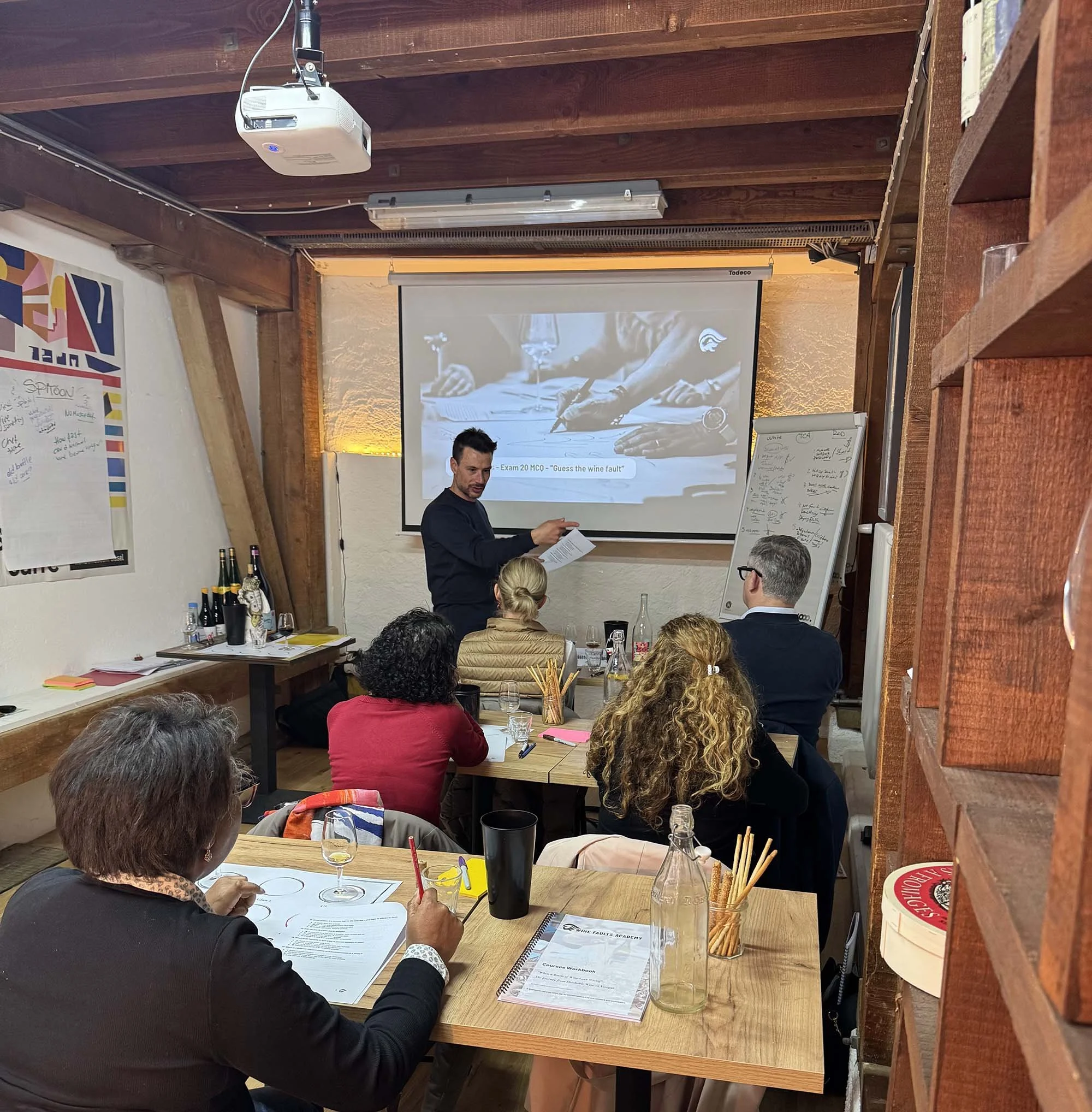Wine Faults Course
for wine professionals and Sommeliers
Learn how to identify and recognise common wine faults — directly in the glass, through smell and taste.
You’ll always compare each fault with a clean control sample to clearly perceive the differences.
Experience and taste the boundaries between minor deviations (imperfections) and distinct wine faults. Together, we’ll explore oxidation, volatile acidity, reduction, and Brettanomyces.
Taste the key components responsible for each fault individually, without cross-contamination.
Develop and refine your ability to detect fault-related aromas and flavours.
With the help of the DAF (Deductive Approach to Faults), build your personal memory bank of off-flavours and aromas — enabling you to intuitively identify faults with confidence.
What are you tasting, and which faults are we covering?
Cork Taint (TCA) - 12 glasses - 1 full-bodied red - 1 light white - increasing TCA contamination on the glass. From minuscule amounts of TCA (no cardboard aromas yet, but…!) to above sensory threshold. Test your individual sensory detection threshold. We are all different!
Brettanomyces - 8 glasses - 1 full-bodied red - 1 light red - 3 components created by this yeast. Understand tolerance and balance btw positive Brett and faultiness.
VA - 6 glasses - 1 natural red - light white - 2 components. Understand the tolerance level to accept this characteristic as a deviation or fault.
Oxidation - 4 glasses - 1 full flavoured white - 1 component. Recognise one of the most common faults when wines are served by the glass.
Reduction - 2 glasses - 1 aromatic white - 1 component. Discover how volatile sulphur compounds can create positive aromas in wine and when they become a fault.
Lightstrike - 2 glasses - 1 traditional method sparkling - 1 component. Discover how potent UV light can be in creating the wrong flavours in wines.
Heat Damage - 1 fortified wine. Discuss and taste the difference between oxidation and oxygenation.
Mousiness - 1 wine - learn and taste this newly talked-about wine fault associated with wines with low sulphite addition.
Smoke Taint - 2 wines - a fault that is increasingly seen when grapes are exposed to wildfires during ripening.
Text workbook
You will receive a Digital (pdf) and printed version of the “Wine Taints and Faults” course Workbook. A 74-page little encyclopedia with all you need to know about wine faults.
Learn how to detect wine faults systematically
We will introduce you to the DAF - Deductive Approach to Faults, developed by us, and the Art of Tasting Sietze Wijma
Language
Class in English and Workbook in German will soon be available.
EXAM
Multiple choice - 50 questions. - 1 wine to taste blind to put your knowledge to the test. “Discover the wine fault”
Digital Diploma of achievement
Best practices for cellaring, opened wines, temperatures
For experienced (who might forget) or young sommeliers, learn best practices so you are not the cause of wine spoilage during service.
Learn together
Share experiences to handle difficult situations with guests when wines are not showing as they should. How to deal with wine faults at the guest table.
Next Course Dates - coming soon
“Brilliant tutor with excellent wine knowledge. As a wine professional with sound base knowledge already, I have learned heaps! The courses are fun, engaging and well structured.”

